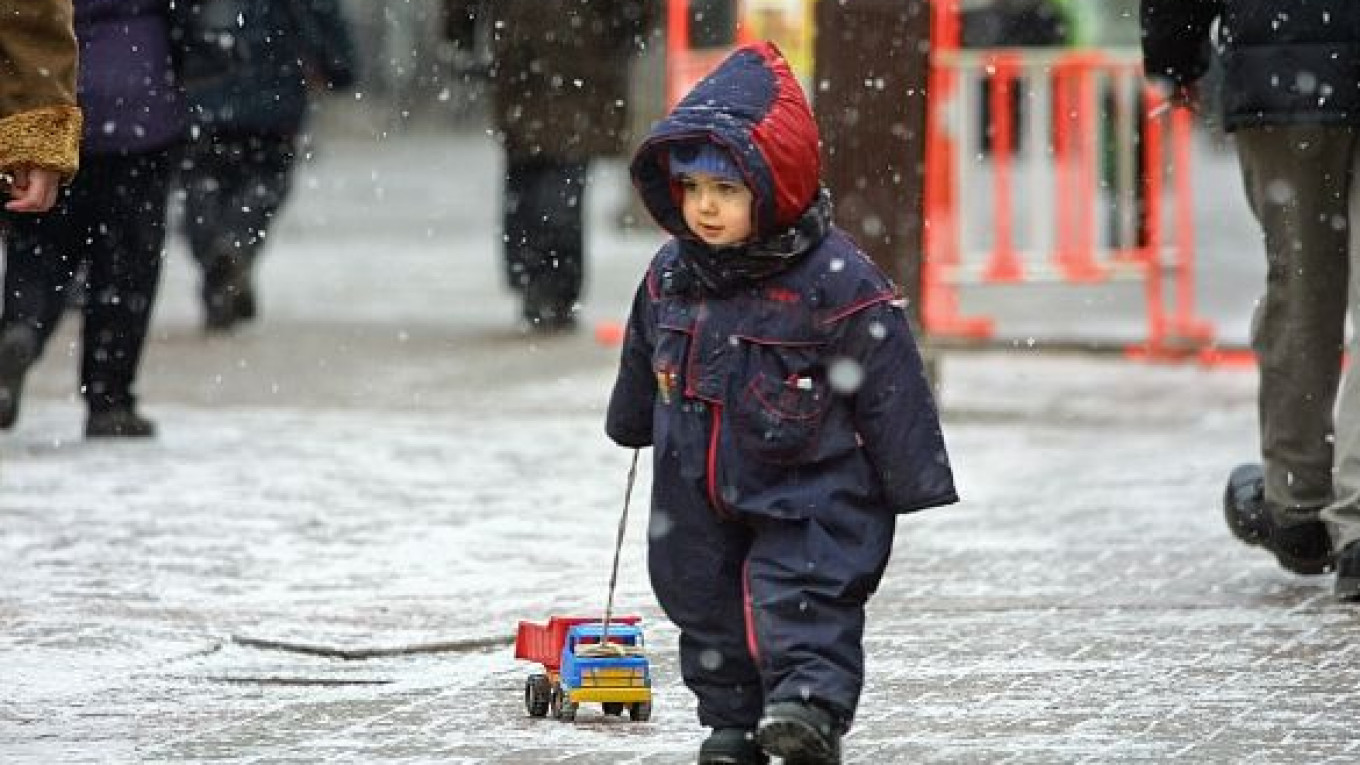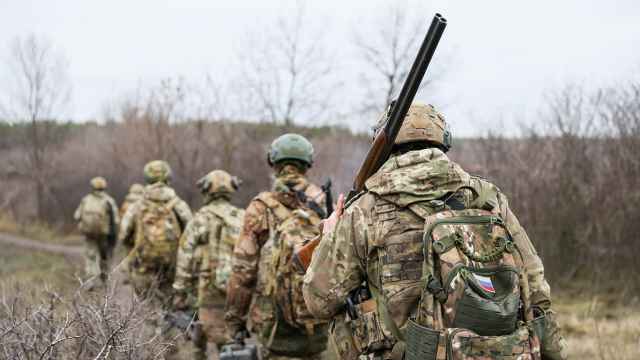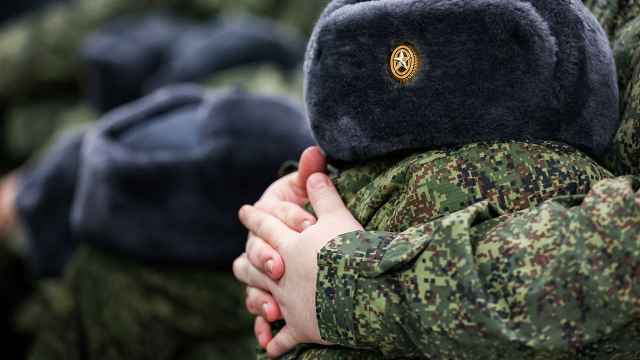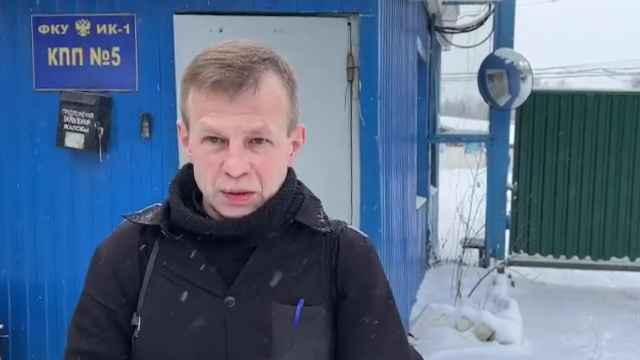Russia's debt may surge to 585 percent of gross domestic product by 2050 as the population declines and the government ramps up spending, pushing the credit rating below investment grade, Standard & Poor's said.
The population will probably shrink to 116 million by 2050 from 140 million last year, forcing the government's age-related expenditures to rise to 25.5 percent of GDP from 13 percent in 2010 in the rating agency's "base-case scenario," S&P credit analysts led by Frank Gill in London said in a research note last week.
The demographic decline will lead to "prolonged fiscal imbalances," putting Russia's credit rating under "rising pressure" after 2015, according to S&P. The government's debt is rated BBB at Standard & Poor's, two notches above junk. The country's state debt made up 9.5 percent of GDP, Finance Minister Alexei Kudrin said Feb. 2.
"Russia's aging population will likely place substantial pressure on economic growth performance and public finances," the analysts wrote. "By 2035, we expect that Russia's fiscal indicators will have weakened such that they would be more in line with sovereigns currently rated in the speculative-grade category, because, in our view, the projected improvement in GDP per capita would not be able to offset the potential fiscal deterioration."
The government may be forced to raise the retirement age to cope with the crisis, Kudrin has said. Russia's population, which has posted 14 years of declines before rising by 23,300 to 141.9 million in 2009, will fall to 139 million by 2031 under the government's baseline forecast.
Pension Age
The pension age is now 60 for men and 55 for women. The country may have 112 working people for 100 pensioners in two years and reach parity by 2030, compared with the current ratio of 128 to 100, according to Kudrin.
The population shrank by 81,600 from the end of 2009 to 141.8 million on Dec. 1, according to latest data from the State Statistics Service published on Feb. 9. The average life expectancy for men is about 61.8 years and 74.2 years for women.
Prime Minister Vladimir Putin made tackling Russia's demographic crisis a priority during his eight years as president, starting payments to women for each second child. In 2007, he approved a long-term plan for halting the decline that aimed to stabilize the population at about 142 million by 2015 and to spur growth to 145 million by 2025.
'Moderate' Spending
The government's spending on its aging population will remain "moderate" until the early 2020s before pension outlays soar as more people approach retirement, S&P said. Spending on pensions is expected to increase to 18.8 percent of GDP by 2050 from 9.4 percent last year, the rating company estimates.
Pensions will rise 8.8 percent in 2011 after readjustment for inflation, following an increase of about 45 percent last year, Putin said during a meeting with Health and Social Development Minister Tatyana Golikova on Jan. 31. That increase amounts to 277 billion rubles ($9.4 billion) a year in additional government outlays, according to Golikova.
The country's old-age dependency ratio, defined as the number of people aged 65 and older divided by the number of those between the ages of 15 and 64, will increase to 39 percent by 2050 from 18 percent in 2010, S&P said.
The population aged 15 to 64 reached a maximum in Russia in 2005, Ivan Tchakarov, chief economist for Russia and the former Soviet Union at Bank of America Merrill Lynch Global Research in Moscow, wrote in a Jan. 21 research note. The age group will only peak in 2025 in China, 2030 in Brazil and 2045 in India, according to Tchakarov.
Labor Costs
The shrinking work force will increase labor costs, accelerating Russia's per capita growth to 4.9 percent this year from 4.4 percent in 2010, making it the richest of the so-called BRIC countries along with Brazil, Merrill Lynch estimates.
Russia's increasing wealth means that its debt rating will likely be raised three notches to A by 2015 before coming under pressure as a result of its demographic decline, S&P said.
Even so, the agency's base-case scenario is "not a prediction," the analysts wrote.
"Rather, it is a simulation that highlights the importance of age-related spending trends as a factor in the evolution of sovereign creditworthiness," according to the report. "Historically, once governments are confronted with unsustainably rising debt burdens, they usually react by tightening their fiscal stances or reforming their expenditure programs."
A Message from The Moscow Times:
Dear readers,
We are facing unprecedented challenges. Russia's Prosecutor General's Office has designated The Moscow Times as an "undesirable" organization, criminalizing our work and putting our staff at risk of prosecution. This follows our earlier unjust labeling as a "foreign agent."
These actions are direct attempts to silence independent journalism in Russia. The authorities claim our work "discredits the decisions of the Russian leadership." We see things differently: we strive to provide accurate, unbiased reporting on Russia.
We, the journalists of The Moscow Times, refuse to be silenced. But to continue our work, we need your help.
Your support, no matter how small, makes a world of difference. If you can, please support us monthly starting from just $2. It's quick to set up, and every contribution makes a significant impact.
By supporting The Moscow Times, you're defending open, independent journalism in the face of repression. Thank you for standing with us.
Remind me later.






